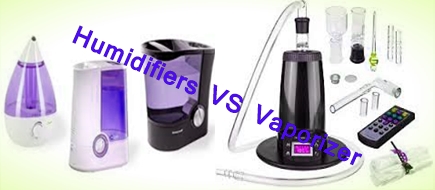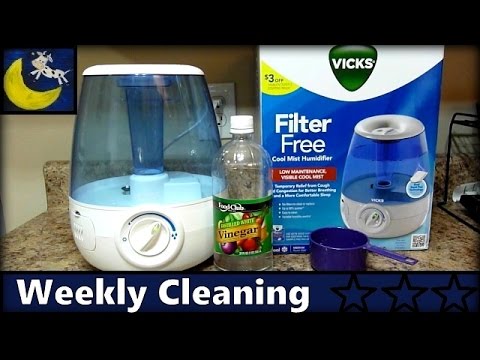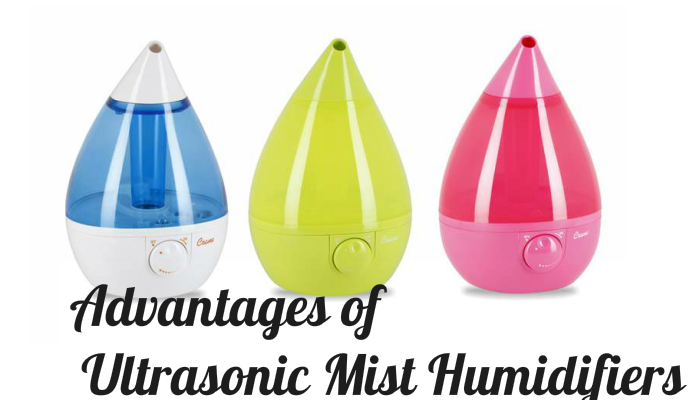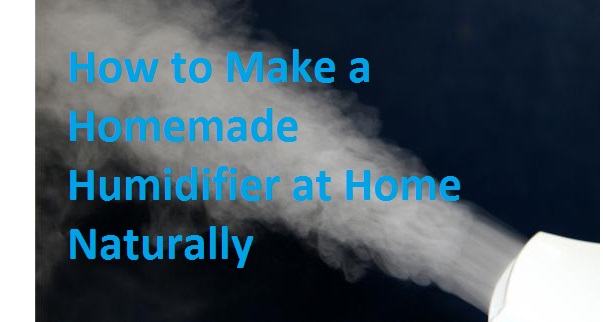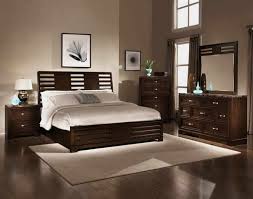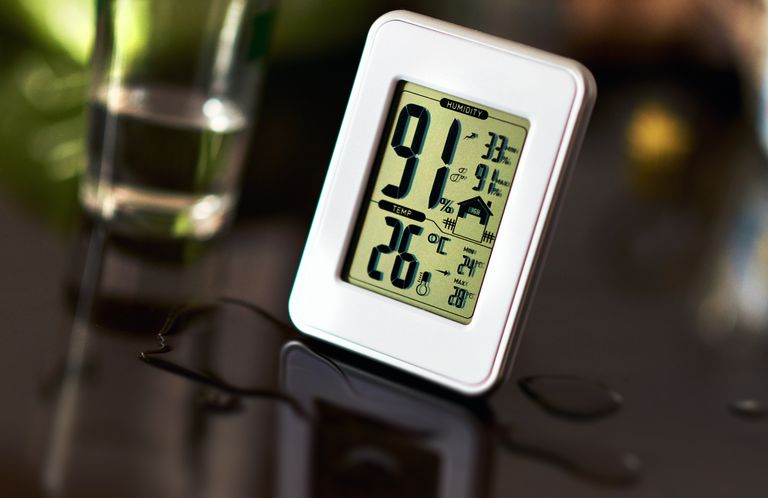Vaporizer vs. Humidifier: Choosing the Right Device for Your Needs
Ever found yourself wondering what’s the real difference between a vaporizer and a humidifier? Well, you’re not alone. It’s a common question, especially during those dry winter months when we’re all trying to keep our homes comfortable and our airways clear.
Vaporizers and humidifiers might seem like they’re the same thing, but they’re actually quite different. They both add moisture to the air, but they do it in different ways and for different reasons. In this article, we’ll delve into the specifics, clearing up any confusion you might have.
So, whether you’re considering buying one or the other, or you’re just curious, stick around. I promise you’ll leave with a better understanding of these two popular household appliances.
What is a Vaporizer?
Let’s dive right into our main topic by answering a common question: “What is a vaporizer?” A vaporizer, also known commonly as a steam vaporizer, is a device that heats water to its boiling point to create hot steam. This steam is then released into the air, increasing the moisture level.
Unlike its counterpart, the humidifier, vaporizers produce hot steam. It’s due to this hot steam that vaporizers are often considered safer, especially in households with children or pets. The boiling process kills most bacteria and impurities present in the water before it’s dispersed into the air, leaving rooms moist and more hygienic.
Vaporizers are also commonly used for medical and therapeutic purposes. They can provide relief from various symptoms such as coughs, congestion, and dry skin conditions. They’re particularly helpful during the colder months when the air tends to be dry, and cold-induced ailments are more prevalent.
Vaporizers are a diverse set, with different models offering various features. Some vaporizers incorporate essential oils for added therapeutic benefits or a pleasant aroma. Others have adjustable steam settings to regulate the moisture output. Understanding these functionalities can aid individuals in selecting the right model for their specific needs.
In terms of operation and maintenance, vaporizers are often simple to use and easy to maintain. Water hardiness can sometimes cause mineral build-up over time, but regular cleaning can prevent this issue. It’s also key to note that due to the heat involved in the operation of vaporizers, caution is advised to avoid potential burns.
Hope this gives you a clearer insight into what a vaporizer is. This understanding is crucial as we continue to unwrap the distinctions between vaporizers and humidifiers. It sheds light on common misconceptions and helps make informed decisions for our health needs.
There you have it! Let’s now take a closer look at humidifiers, outlining their benefits and specific differences compared to vaporizers.
How Does a Vaporizer Work?
Diving into the science behind how a vaporizer works, it’s all about heat. Heat is the key factor. A vaporizer usually works by heating water to its boiling point. This separates water molecules from each other, transforming the liquid into a hot mist or steam.
Inside the vaporizer, there’s an element that heats up when the unit is switched on. This heating element could be an electrical coil or ceramic heating component. The goal here is to reach a temperature high enough to boil water. The heat makes the water molecules jumpy, and they start to vibrate and move around faster. As more and more heat is applied, the water molecules move so quickly that they break away from the liquid water and become steam.
But it’s not all about the steam, aromatherapy is a big part of why people use vaporizers. The option to add essential oils is a feature that many appreciate. These oils are placed in a separate compartment where they can be heated separately from the water. The steam from the boiling water carries the essence of the oils into the air. This not only humidifies the surroundings but also diffuses a pleasant aroma.
Now let’s talk about output control on vaporizers. To suit specific needs, some models allow you to adjust the amount of steam produced. This is done by modifying the power sent to the heating element which in turn controls the temperature. More temperature equals more steam and vice versa.
One thing I know from experience is that proper maintenance is crucial for a vaporizer. Regular cleaning helps prevent scale and mineral buildup from tap water. Keeping it clean ensures its efficiency and extends its life.
It’s clear that vaporizers leverage simple science to perform their tasks, be it humidifying the room or diffusing essential oil fragrances. Now, when you flip that switch, you’ll have a better idea of what’s happening inside the machine.
Types of Vaporizers
Within the world of vaporizers, we’ll find three main types: warm mist vaporizers, cool mist vaporizers, and ultrasonic vaporizers. Each offers unique benefits and, depending on your specific needs, one may suit your lifestyle better than the others.
With warm mist vaporizers, we’re talking about machines that heat up the water to create steam. These work particularly well to eliminate airborne bacteria. If you suffer from allergies or asthma, a warm mist vaporizer might be a great fit. Often, these types incorporate medicinal inhalants with the steam, providing relief from congestion.
On the other hand, cool mist vaporizers disperse a cool, gentle mist into the air. One advantage is that they cover a larger area compared to warm mist vaporizers and are thus ideal for larger rooms. Additionally, since they do not heat up, they can be safer around children and pets. For those living in hotter climates, cool mist vaporizers help to slightly decrease room temperature.
Then, we have ultrasonic vaporizers, the modern tech-savvy choice. They use ultrasonic vibrations to transform water into a cool mist. Their standout feature is the silent operation; you’d hardly know they’re there. Plus, they’re energy-efficient. Ultrasonic vaporizers are best for individuals looking for a quiet, cost-effective solution.
Each vaporizer type has its unique strengths depending on the user’s needs and preferences. Table 1 below summarizes the features of each type.
| Vaporizer Type | Benefits | Best For |
|---|---|---|
| Warm Mist | Eliminates airborne bacteria, Helps alleviate congestion | Allergies, Asthma, Cold symptoms |
| Cool Mist | Covers a large area, Safer for kids and pets | Large Rooms, Hot Climates |
| Ultrasonic | Silent Operation, Energy-efficient | Quiet Environments, Cost-Efficiency |
As we delve deeper into the subject, I’ll touch upon how vaporizers differ from humidifiers. It’s crucial to understand these differences when deciding which device to bring into your home.
Benefits of Using a Vaporizer
Vaporizers aren’t just about adding moisture back into the air. When used correctly, they offer a multitude of benefits that surpass simple humidification. Here’s why they’re worth considering.
Health and Wellness
Let’s start with the big one: health benefits. Vaporizers, particularly warm mist types, can help with a whole range of respiratory and allergy troubles. They’re known to be excellent in eliminating airborne bacteria. This makes them particularly beneficial for those with allergies or asthma.
Cold and flu season? Not a problem! Vaporizers can help alleviate congestion and soothe sore throats. Their warm mist works wonders for decongestion, helping to break up mucus and make your nights much more comfortable.
Air Quality Improvement
While regular humidifiers also increase humidity levels, vaporizers go a step further. They can improve overall air quality by producing pure steam without any dust particles. Living environments are easily susceptible to polluting substances. A good vaporizer can help combat these pollutants, reducing the amount of dust and allergens.
Cost and Energy Efficiency
Ultrasonic vaporizers are a testament to this advantage. Known for their silent operation, they also take the cake for being energy efficient. They use ultrasonic vibrations to transform water into a cool mist, consuming less electricity in the process.
Safety and Convenience
For large spaces or homes with children and pets, a cool mist vaporizer could be your best bet. It disperses a refreshing mist into the air without any risk of burns. They’re safer due to the cool temperature they operate at, with their lack of heated elements being a key feature.
The wide array of vaporizer benefits underscores their versatility. They help to alleviate health complications, improve the home’s air quality, boost energy efficiency, and offer safer alternatives. Next up, we’ll discuss some more technical aspects you might want to consider before getting your hands on one of these quality life enhancers.
What is a Humidifier?
After skimming the surface of vaporizers, you might be curious about humidifiers. Trust me, there’s a lot more to them than meets the eye. First, let’s establish this. Humidifiers work to increase the moisture level in the air. They’re extremely popular during those cold, dry months where skin chapping and static electricity become part of your daily life.
Humidifiers come in different types and sizes, and their method of introducing moisture into your atmosphere varies. For instance, the evaporative humidifier works by using a fan to blow air over a wet wick, humidifying the air. It is self-regulating, since as humidity increases, it is less capable of evaporating water from the wick.
Let’s dig deeper still. The central humidifiers are built into home heating and air conditioning systems. They’re perfect if you want to humidify your entire house. Point to note? They can be quite expensive to install.
On the other hand, the ultrasonic humidifier uses a cool mist to humidify. It incorporates a metal diaphragm vibrating at an ultrasonic frequency to create water droplets.
It’s also key to spotlight the impeller humidifier. This one uses a rotating disk to fling water at a comb-like diffuser, breaking the water into tiny droplets that float into the air.
You also got steam vaporizers. These are electrically powered and heat the water before cooling it down. The cool mist then disperses into the room.
Each humidifier has its own unique features and benefits. Depending on your needs, one type may be more suitable for your home or office than the others. After exploring the world of vaporizers and humidifiers, it’s crystal clear that both play a significant role in enhancing your indoor air quality and overall well-being.
How does a Humidifier Work?
As I delve into the workings of a humidifier, it’s vital to recall its primary purpose. A humidifier is an appliance designed to increase the humidity or moisture level in an indoor area. From helping to alleviate dry skin to reducing instances of sinus problems, humidifiers come packed with benefits.
But just how do these handy devices go about fulfilling their purpose?
Much like vaporizers, different types of humidifiers utilize distinct mechanisms to increase humidity, but they generally operate on the same basic principle. They heat water, transforming it from a liquid state to vapor or mist, which is then released into the surrounding environment. This increase in moisture levels can be a lifeline in drier climates or during cold winter months when heating systems can strip the air of its natural moisture.
Evaporative Humidifiers are the most common types in households. They employ a simple system where a wick or filter absorbs water from a reservoir. A fan then blows over the wick, causing the water to evaporate and increase the moisture level in the air.
Ultrasonic Humidifiers, on the other hand, use a completely different technique. They employ high-frequency sound vibrations to produce a fine water mist that is expelled into the air.
Then we have Impeller Humidifiers which use a rotating disc to fling water at a diffuser. The diffuser breaks the water into tiny droplets that float into the air.
Steam Humidifiers, also known as steam vaporizers, heat the water until it turns into steam. The steam is then cooled and released into the room.
Lastly, Central Humidifiers are built directly into your home’s heating and air conditioning system. They keep the entire house moisturized via the HVAC system, achieving a comprehensive ‘humidified’ environment.
Behind the scenes, humidifiers execute these processes continuously, ensuring our rooms and homes are kept at comfortable and healthy moisture levels. Each of these appliances offers a unique approach to tackling dry air, but they all share the same end game: optimizing indoor air quality for our health and comfort.
Types of Humidifiers
As we delve deeper into the world of humidifiers, one fact that stands out is the sheer variety. Knowing about the different types of humidifiers can help in deciding which one suits your needs the most. Let me break it down for you and discuss the major categories: evaporative humidifiers, ultrasonic humidifiers, impeller humidifiers, steam humidifiers, and central humidifiers.
Evaporative Humidifiers utilise a basic principle: the evaporation of water into the air. With the help of a wick filter absorbing water from the reservoir, it’s then evaporated by a fan blowing air across the filter. It’s a natural process and self-regulating, as the humidity in a room rises, the evaporation process naturally slows down.
In the case of Ultrasonic Humidifiers, a metallic diaphragm vibrating at an ultrasonic frequency creates water droplets that are expelled into the air. These models are loved for their whisper-quiet operation and low energy consumption.
Impeller Humidifiers, on the other hand, use a rotating disc to fling water at a diffuser which breaks the water into fine droplets that float into the air. They run whisper quiet and are energy efficient but may create white dust, a consequence of minerals in regular tap water.
Steam Humidifiers, also known as “vaporizers,” boil water and release the steam directly into the room. These units can also incorporate inhalants to help with cold and flu symptoms. These are the most hygienic, as the boiling process kills any bacteria or mold present in the water.
Finally, Central Humidifiers, are built into your home’s HVAC system and work to humidify the whole house. These can be more expensive than portable models, but offer a more comprehensive solution for maintaining indoor humidity levels.
Keep in mind that each type of humidifier has its pros and cons, so choose wisely based on your specific needs and requirements. As we move forward, we’ll continue our discussion on other factors affecting your choice of a suitable humidifier.
Benefits of Using a Humidifier
Let’s switch gears for a moment and delve into bits about the benefits of using a humidifier. Undoubtedly, selecting the right humidifier might be influenced by knowing just what good it does for you and your home?
First and foremost, a humidifier restores moisture to dry indoor air. During winter, the relative humidity indoors can drop to as low as 10% due to heating systems. This low humidity level may result in dry skin, chapped lips, scratchy throat, bloody noses, and even aggravated symptoms for asthma and allergy sufferers. With a good humidifier, it’s possible to bring relative humidity levels back to the health-conscious spectrum of 30%-50%.
A further advantage of using a humidifier lies in its ability to reduce snoring. People who snore might find it beneficial to have a humidifier present in the bedroom. Dry air can congest the airways and amplify snoring, making for a less-than-restful slumber. By moisturizing the air, a humidifier can alleviate this issue and potentially reinforce a good night’s sleep.
Moreover, humidifiers also lend a hand in preserving the integrity of your wood furniture. Insufficient humidity can cause wood to split and crack. If you’ve invested in solid wood furniture or house features like wooden floors and moldings, a humidifier can contribute to their longevity by maintaining appropriate moisture levels in the air.
Finally, if you often find static electricity getting on your nerves during dry periods, you’ll be pleased to know that increasing indoor humidity with a humidifier can curtail this irritating occurrence.
* Quick Recap * Restores moisture to dry indoor air * Can reduce snoring * Preserves wood furniture * Reduces static electricity
Regardless of which humidifier type you settle on, the benefits are substantial. The factors influencing your selection might vary, yet the value of maintaining the right level of indoor humidity remains constant. The subsequent section will equip you with insights into the differences between a humidifier and a vaporizer to strengthen your understanding and aid your decision-making process.
Key Differences Between Vaporizers and Humidifiers
Diving right into it, one of the fundamental differences between vaporizers and humidifiers is in the way they function. A vaporizer uses heat to boil water which then releases steam into the air. On the other hand, a humidifier disperses moisture into the room in the form of a cool mist.
| Function | Vaporizer | Humidifier |
|---|---|---|
| Release mechanism | Heat + Steam | Cool Mist |
Now let’s talk about the benefits each brings to the table. Because vaporizers use heat, they can be more effective at killing bacteria and viruses in the air. It’s one potential way to stay ahead of flus and colds.
Humidifiers, while they may not be as effective in purifying the air, can be much quieter as they operate. If you’re a light sleeper or need to use one in an infant’s room, a humidifier is going to be your preferred choice!
Another noticeable difference lies in safety. The boiling water and hot steam emitted by the vaporizer can pose a burn risk, especially for children and pets. In contrast, humidifiers, which emit cool mist, are safer.
| Features | Vaporizer | Humidifier |
|---|---|---|
| Benefits | Kills bacteria + viruses | Quieter |
| Safety | Risk of burns | Safer |
Finally, cost can be a determining factor when choosing between a vaporizer and a humidifier. Vaporizers generally come with a lower price tag, while humidifiers can range in cost based on their features and functionalities.
Summarizing, your choice between a vaporizer or a humidifier will largely depend on your particular needs, your budget, and who will be primarily using the device. Knowing these differences can certainly guide your decision-making process. But remember, whether it’s a vaporizer or a humidifier, both aim to increase the level of moisture in your indoor atmosphere.
Conclusion
So, it’s clear that both vaporizers and humidifiers serve a vital purpose in maintaining a healthy indoor environment. They each come with their own set of pros and cons. Vaporizers, with their heat-based operation, excel at eliminating germs but may pose a safety risk. On the other hand, humidifiers offer a quiet, safe solution to dry air problems, though they may not be as effective in dealing with airborne pathogens. When it comes to cost, vaporizers are typically the more budget-friendly option. Ultimately, the decision rests on your specific needs, your budget, and who’ll be around the device most often. Remember, it’s all about creating a comfortable, healthy space for you and your loved ones.

